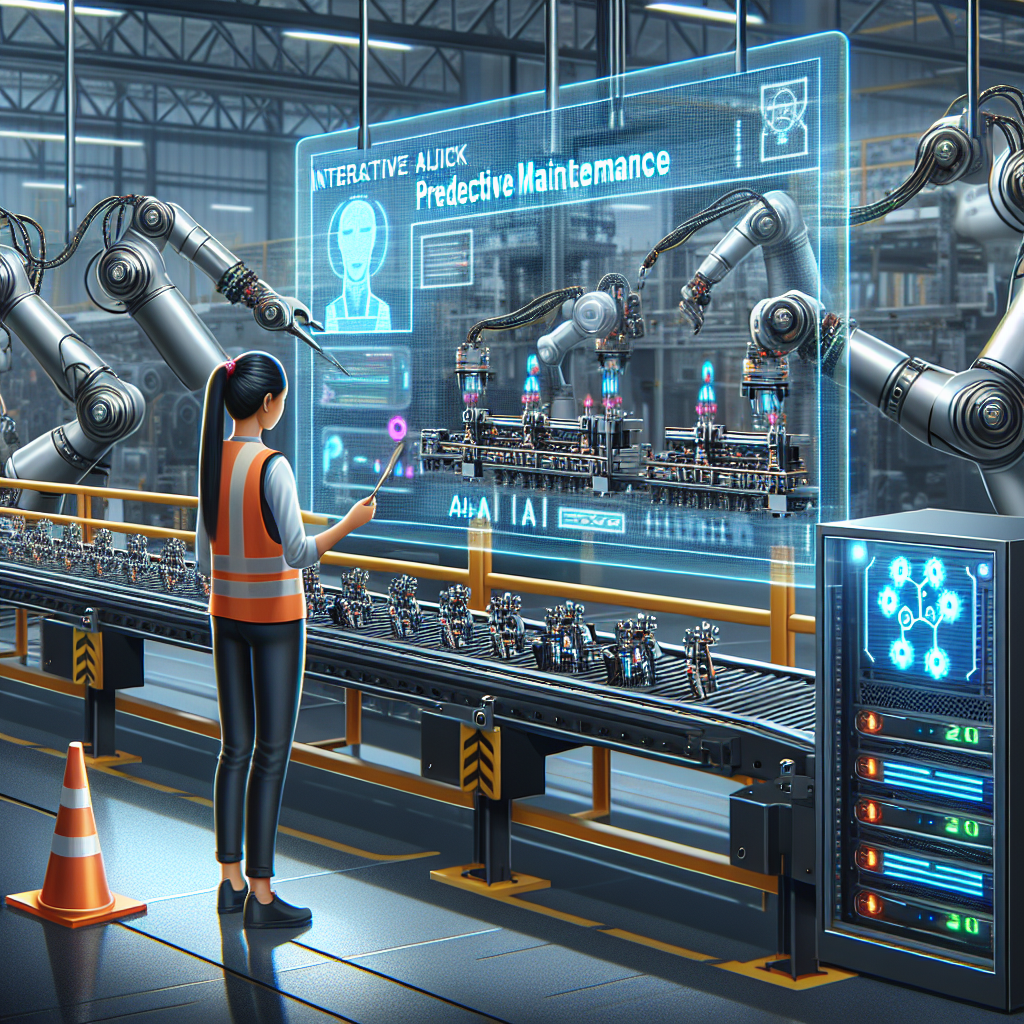The manufacturing industry is one that relies heavily on machinery and equipment to produce goods efficiently and effectively. However, with the constant wear and tear that comes with regular use, maintenance is a crucial aspect of ensuring that these machines continue to operate at peak performance.
Traditionally, maintenance scheduling in manufacturing has been a manual process, with technicians relying on their experience and intuition to determine when a machine needs servicing. This can often lead to inefficiencies, as maintenance may be performed too early, leading to unnecessary downtime and costs, or too late, resulting in breakdowns and production delays.
Enter artificial intelligence (AI). AI has the potential to revolutionize maintenance scheduling in manufacturing by analyzing vast amounts of data to predict when equipment is likely to fail and schedule maintenance accordingly. This proactive approach to maintenance, known as predictive maintenance, can help manufacturers save time and money by minimizing downtime and optimizing the lifespan of their equipment.
One of the key benefits of using AI for maintenance scheduling is its ability to analyze data in real-time. By monitoring equipment sensors and other relevant data sources, AI can detect patterns and anomalies that may indicate a potential issue before it becomes a major problem. This allows maintenance to be scheduled at the optimal time, minimizing disruption to production and reducing the risk of costly breakdowns.
AI can also help manufacturers optimize their maintenance schedules by taking into account factors such as equipment usage, environmental conditions, and historical maintenance data. By analyzing these variables, AI can create customized maintenance schedules that are tailored to the specific needs of each machine, ensuring that maintenance is performed when it is most needed.
In addition to predictive maintenance, AI can also be used for prescriptive maintenance, which involves providing recommendations on the best course of action to take in response to a potential issue. By analyzing data and using machine learning algorithms, AI can suggest the most effective maintenance strategies to maximize equipment uptime and reliability.
Overall, the use of AI for maintenance scheduling in manufacturing has the potential to revolutionize the way maintenance is performed, leading to increased efficiency, reduced downtime, and cost savings. As AI technology continues to advance, manufacturers are likely to see even greater benefits from incorporating AI into their maintenance practices.
FAQs:
Q: How does AI determine when maintenance is needed?
A: AI analyzes data from equipment sensors, historical maintenance records, and other sources to detect patterns and anomalies that may indicate a potential issue. By monitoring these factors in real-time, AI can predict when maintenance is likely to be needed and schedule it accordingly.
Q: What are the benefits of using AI for maintenance scheduling in manufacturing?
A: Some of the key benefits include increased efficiency, reduced downtime, cost savings, and optimized equipment lifespan. AI can help manufacturers proactively schedule maintenance at the optimal time, minimizing disruption to production and maximizing equipment uptime.
Q: How does AI help optimize maintenance schedules?
A: AI takes into account factors such as equipment usage, environmental conditions, and historical maintenance data to create customized maintenance schedules that are tailored to the specific needs of each machine. This ensures that maintenance is performed when it is most needed, leading to increased efficiency and reliability.
Q: What is the difference between predictive and prescriptive maintenance?
A: Predictive maintenance involves using AI to predict when maintenance is likely to be needed based on data analysis, while prescriptive maintenance involves providing recommendations on the best course of action to take in response to a potential issue. Both approaches can help manufacturers optimize their maintenance practices and maximize equipment uptime.

